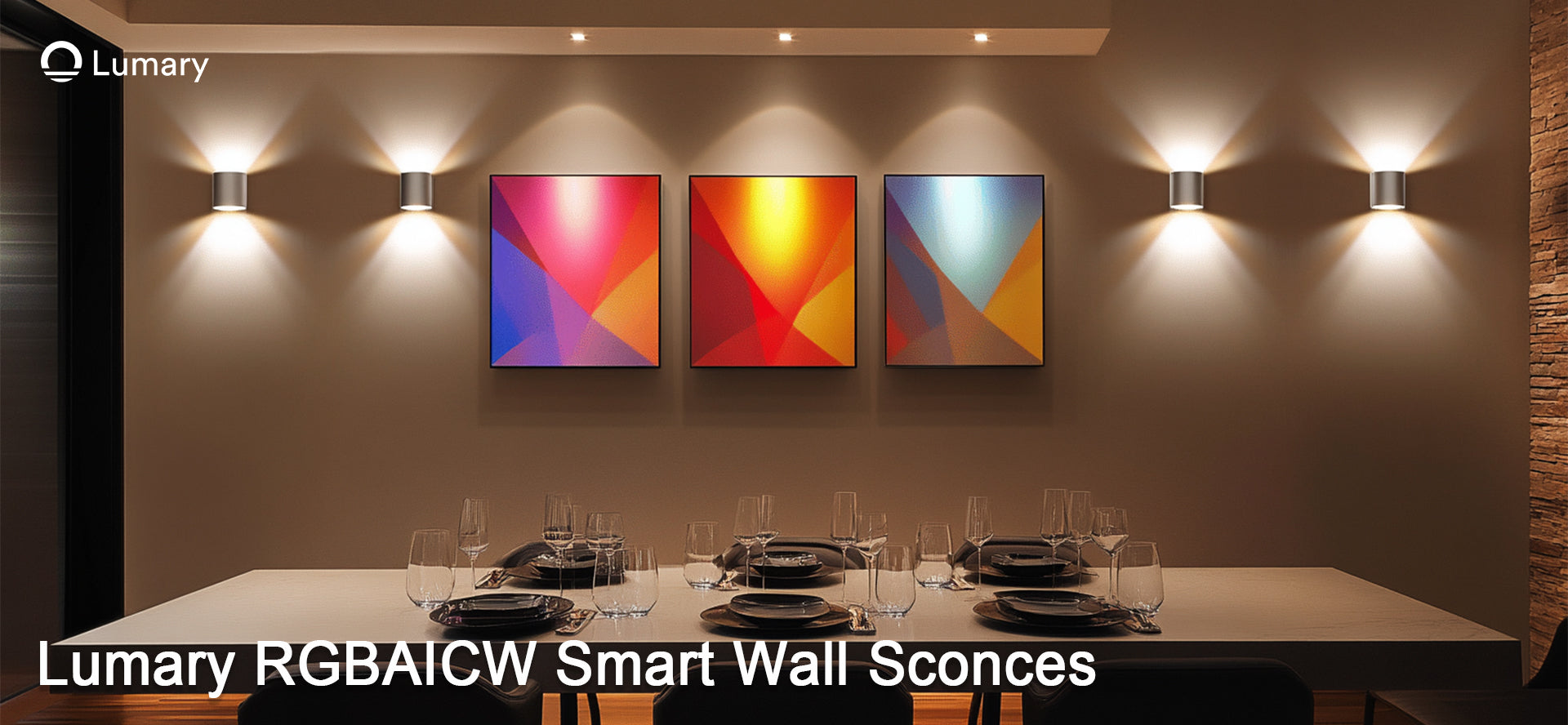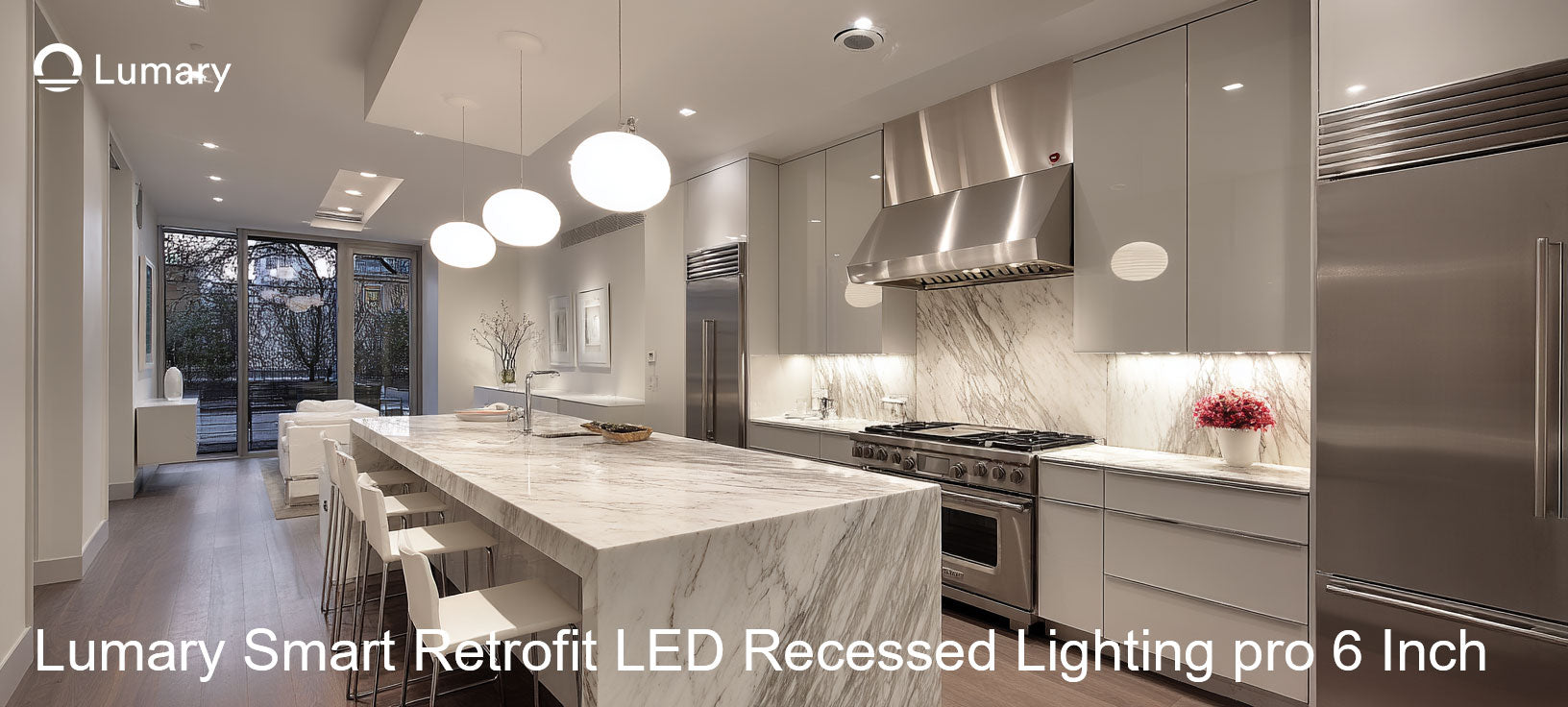Lighting plays a huge role in how your home feels. If you’re looking for a modern and energy-efficient option, LED recessed lighting might be just what you need. It’s sleek, versatile, and perfect for creating the right mood in any room. Whether you want bright, focused light or a soft, cozy glow, recessed lighting LED fixtures can do it all. Plus, they help you save energy and cut down on electricity bills. With the right choice, you can transform your space into something truly special.
Key Takeaways

-
LED recessed lights save energy, using 80% less than old bulbs. This can save you about $1,000 in ten years.
-
Pick the right brightness by learning about lumens and watts. Lumens show brightness, so choose energy-saving ones without losing light.
-
Buy ENERGY STAR-certified lights for energy savings and durability. These lights last longer and save money over time.
-
Dimmable lights let you change brightness for any occasion. They help set the mood and make your home feel cozy.
-
Install and maintain lights properly to make them last longer. Clean them often and use dimmer-compatible switches for best results.
Understanding LED Recessed Lighting
What Is LED Recessed Lighting?
LED recessed lighting, also called can lighting or downlighting, is a sleek and modern lighting solution that blends seamlessly into your ceiling. It consists of three main parts: the housing, which holds the components; the trim, which is the visible edge; and the bulb, which provides the light. This design creates focused illumination while keeping your ceiling clean and uncluttered. Whether you’re lighting up a kitchen, bathroom, or living room, recessed lights offer a stylish and functional option for any space.
Benefits of LED Recessed Lighting
Energy Efficiency and Cost Savings
One of the biggest perks of LED recessed lighting is its energy efficiency. These lights use up to 80% less energy than traditional bulbs, which means you’ll see noticeable savings on your electricity bills. Over time, switching to LED lighting can save the average household around $1,000 in energy costs over a decade. Plus, with a lifespan of up to 50,000 hours, you won’t have to worry about frequent replacements, saving you even more money in the long run.
Sleek and Modern Design
If you’re aiming for a minimalist look, recessed lighting is a perfect choice. Its flush-mounted design keeps your ceiling looking smooth and uncluttered. This makes it ideal for modern homes where clean lines and simplicity are key. Whether you’re highlighting a piece of art or creating a cozy ambiance, recessed lighting adds a touch of sophistication to any room.
Long Lifespan and Durability
LED recessed lights are built to last. With an average lifespan of 25,000 to 50,000 hours, these lights outshine traditional bulbs by a long shot. Their durability means you won’t have to deal with constant replacements, making them a hassle-free option for your home. Once installed, you can enjoy years of reliable lighting without a second thought.
Versatility for Different Spaces
Recessed lighting is incredibly versatile. You can use it in kitchens for bright, focused lighting while cooking or in bathrooms for clean, even illumination. It’s also great for living rooms, where it helps create a warm and inviting atmosphere. Whether you’re working, relaxing, or entertaining, recessed lighting LED fixtures can adapt to your needs and enhance the vibe of any space.
Key Factors to Consider
Brightness
Understanding Lumens vs. Watts
When choosing recessed lights, understanding lumens and watts is crucial. Lumens measure the brightness of a light, while watts indicate the energy it consumes. This distinction matters because modern LED lighting focuses on delivering more lumens with less energy. For example:
-
Lumens tell you how bright the light will be.
-
Watts show how much power the light uses.
-
Focusing on lumens helps you pick energy-efficient options without sacrificing brightness.
Think of it this way: a 60-watt incandescent bulb might produce 800 lumens, but an LED bulb can achieve the same brightness using just 10 watts. This efficiency makes LED recessed lights a smart choice for your home.
How to Choose the Right Brightness for Each Room
The right brightness depends on the room’s purpose. A kitchen needs bright, focused lighting, while a bedroom benefits from softer illumination. Use the table below to guide your choices:
|
Room Type |
Room Size (sq. ft.) |
Recommended Footcandles |
Required Lumens |
|---|---|---|---|
|
Bedroom |
168 |
20 |
3,360 |
|
Kitchen |
192 |
40 (general) |
7,680 |
|
|
|
30 (task) |
2,100 |
|
Bathroom |
80 |
30 |
2,400 |
This ensures proper light coverage and enhances the functionality of each space.
Energy Efficiency
Importance of Energy-Efficient Lighting
Energy-efficient lighting saves money and reduces your carbon footprint. LED recessed lights use up to 80% less energy than traditional bulbs, making them an eco-friendly option. Over time, this efficiency translates to significant savings on your electricity bills. Plus, LEDs produce less heat, which keeps your home cooler and more comfortable.
Look for ENERGY STAR-Certified Products
When shopping for recessed lighting LED fixtures, look for the ENERGY STAR label. This certification guarantees that the product meets strict energy efficiency standards. ENERGY STAR-certified lights not only consume less power but also last longer, giving you more value for your investment.
Dimmability
Benefits of Dimmable Lighting
Dimmable recessed lights offer unmatched versatility. You can adjust the brightness to suit any occasion, whether it’s a cozy movie night or a lively dinner party. Here are some key advantages:
|
Advantage |
Description |
|---|---|
|
Energy Efficiency |
Consumes less power, reducing energy bills. |
|
Versatility in Lighting |
Adjust brightness for different occasions, enhancing ambiance. |
|
Longevity and Cost-Effectiveness |
Lasts longer, saving money on replacements. |
|
Aesthetic Appeal |
Complements various interior styles with sleek designs. |
|
Enhanced Lighting Quality |
Provides even illumination without dark spots. |
Dimmable smart bulbs also let you customize light colors, adding a personal touch to your home.
Ensuring Compatibility with Dimmer Switches
To enjoy the benefits of dimmable lighting, ensure your LED recessed lights are compatible with dimmer switches. Here’s how:
-
Check if the lights and dimmer switch are compatible.
-
Match the wattage ratings of both.
-
Use trailing edge dimmers for better performance with lower wattages.
This ensures smooth dimming and prevents flickering, giving you full control over your lighting.
Design Compatibility
Matching Lighting Styles with Home Decor
Choosing recessed lights that match your home decor can elevate your space’s overall look. These lights are versatile and work well with various interior styles. Whether your home leans modern, traditional, or somewhere in between, recessed lighting can blend in beautifully.

Here’s a quick guide to help you match lighting styles with your decor:
|
Feature |
Description |
|---|---|
|
Sleek and modern design |
Enhances the visual appeal of any room, complementing various interior styles. |
|
Versatility in different settings |
Seamlessly integrates into diverse home settings, from kitchens to bathrooms and living rooms. |
|
Dimmable options |
Allows users to adjust brightness levels, creating different moods that align with decor. |
For example, if your living room has a minimalist vibe, recessed lights with a clean trim and neutral color temperature will fit right in. In contrast, a warmer tone works better for cozy, rustic spaces. The flexibility of dimmable smart bulbs also lets you adjust the ambiance to suit your mood or occasion.
How to Choose the Right Size, Trim, and Color Temperature
Knowing how to choose the right size, trim, and color temperature is key to achieving the perfect lighting. Start by considering the size of your room. Larger spaces may need bigger recessed fixtures or more of them to ensure proper coverage. For smaller rooms, compact options work best.
Trim style also matters. A baffle trim reduces glare, while a reflector trim enhances brightness. If you want a decorative touch, go for trims with unique finishes.
Color temperature plays a big role in setting the mood. A warm white (2700K-3000K) creates a cozy feel, while a cool white (4000K-5000K) is ideal for task-oriented spaces like kitchens. Adjustable LED recessed lights let you switch between temperatures, offering even more flexibility.
Cost-Effectiveness
Balancing Upfront Costs with Long-Term Savings
LED recessed lights might seem pricey upfront, but they’re worth it in the long run. These lights consume less energy and last much longer than traditional bulbs, saving you money on electricity and replacements. Over time, the savings outweigh the initial investment.
Here’s a breakdown of typical costs for recessed lighting fixtures:
|
Fixture Type |
Cost Range |
|---|---|
|
Basic |
$15 - $30 |
|
IC-rated |
$20 - $50 |
|
Dimmable |
$25 - $50 |
|
Airtight |
$30 - $60 |
|
Smart |
$40 - $100 |
Smart recessed lights, while on the higher end, offer advanced features like app control and voice commands. These features add convenience and enhance your home’s functionality.
Comparing Prices and Warranties
When shopping for recessed lighting, compare prices and warranties to get the best value. Look for products with longer warranties, as they often indicate better quality. ENERGY STAR-certified options usually come with solid warranties and guarantee energy efficiency.
Don’t forget to factor in installation costs. While some fixtures are DIY-friendly, others may require professional help. Balancing these costs with the long-term savings ensures you make a smart investment.
Top Recommendations for 2025
Features to Look for in 2025
Smart Lighting Integration
In 2025, smart lighting integration has become a game-changer for recessed lights. You can now control your lighting with ease using apps, Alexa, or Google Assistant. Adjust brightness, color, and even create schedules—all from your smartphone. Imagine walking into a room and having the lights adjust automatically to your preferred settings. Some smart LED recessed lights even sync with music, creating dynamic effects for parties or relaxing evenings. These features make your lighting not just functional but also fun and interactive.
Advanced Dimming and Color-Changing Options
Modern recessed lights offer advanced dimming and color-changing capabilities. You can customize the brightness to suit any mood or occasion. Whether you want a soft glow for a cozy night or vibrant lighting for a gathering, these options have you covered. Many lights also let you adjust the color temperature, from warm white for relaxing spaces to natural white for work areas. This flexibility ensures your lighting adapts to your needs throughout the day.
Improved Energy Efficiency Standards
Energy efficiency remains a top priority in 2025. The best LED light bulb options now consume significantly less energy while delivering brighter illumination. Many recessed lights meet ENERGY STAR standards, ensuring they’re both eco-friendly and cost-effective. Features like automatic dimming and natural light adjustments further enhance energy savings. These innovations not only reduce your electricity bills but also contribute to a greener planet.
Best LED Recessed Lighting Products
Lumary RGBAI Gimbal Smart Recessed Lighting 4 Inch Pro, 9w 780LM
The Lumary RGBAI Gimbal Smart Recessed Lighting stands out as one of the best options for 2025. Its 270° rotation and 90° tilt make it perfect for highlighting artwork or architectural features. You’ll love its ease of install, with a setup time of under a minute. The Lumary app gives you full control over brightness and color temperature, ranging from 2700K to 6500K. Plus, its auxiliary light offers 16 million colors and music-syncing capabilities, making it ideal for creating vibrant atmospheres. With voice control and a lifespan of 25,000 hours, this light combines style, functionality, and durability.
[Product 2 Name and Key Features]
Another top pick for 2025 is [Product 2 Name]. This recessed light offers customizable designs and flexible applications, making it suitable for any room. Its smart controls allow you to adjust settings remotely, ensuring convenience and efficiency. With advanced dimming options and ENERGY STAR certification, this product delivers both performance and energy savings.
[Product 3 Name and Key Features]
[Product 3 Name] is another excellent choice for recessed lighting. It features automatic dimming and color temperature adjustments, supporting natural circadian rhythms. Its sleek design blends seamlessly into any decor, while its long lifespan reduces maintenance needs. This light also integrates with security systems, enhancing safety and functionality in your home.
Installation and Maintenance Tips
Installation Basics
Tools and Materials Needed
Before you start installing recessed lights, gather the right tools and materials. Having everything ready will make the process smoother and safer. Here’s what you’ll need:
-
Tools:
-
Drill
-
Drywall circle cutter
-
Wire cutter/stripper
-
Voltage tester
-
Measuring tape
-
Screwdriver (flathead and Phillips)
-
Ladder or step stool
-
-
Materials:
-
Replacement recessed lighting fixture
-
Wire connectors
-
Electrical tape
-
Light bulb compatible with the new fixture
-
Step-by-Step Installation Guide
Installing recessed lights might seem tricky, but you can handle it with the right steps. Follow this guide:
-
Turn off the power: Use a voltage tester to ensure no electricity flows to the area.
-
Mark the spot: Use a measuring tape to mark where you want the light. Cut a hole in the ceiling with a drywall circle cutter.
-
Connect the wires: Strip the wires and connect them using wire connectors. Secure them with electrical tape.
-
Install the fixture: Insert the recessed light housing into the hole. Tighten it securely.
-
Add the bulb: Screw in a compatible bulb and test the light.
If you’re unsure about any step, don’t hesitate to consult a professional.
Maintenance Tips
Cleaning and Care for LED Recessed Lights
Keeping your recessed lights clean ensures they stay bright and energy-efficient. Here’s how to care for them:
-
Turn off the power and let the fixture cool before cleaning.
-
Use a microfiber towel to dust the trim and bulb. Avoid harsh chemicals.
-
For stubborn dirt, mix a mild cleaner with warm water. Keep water away from electrical parts.
-
Regular cleaning, about once a year, helps maintain efficiency and extends the lifespan of your LED fixtures.
Regular maintenance prevents dirt buildup and keeps your recessed lights looking great.
Troubleshooting Common Issues
Sometimes, recessed lights may not work as expected. Here’s how to fix common problems:
-
If the light doesn’t turn on, check the power and wiring connections.
-
Replace the bulb if it’s burned out.
-
If the trim doesn’t match your ceiling, consider swapping it for a better fit.
-
For flickering lights, ensure the dimmer switch is compatible with your LED bulbs.
If the issue persists, call a licensed electrician.
When to Call a Professional
Complex Installations
Some installations, like those involving sloped ceilings or multiple fixtures, can be challenging. A professional can ensure proper placement and wiring, saving you time and stress.
Electrical Safety Concerns
DIY projects can pose safety risks. For example:
|
Safety Risk Type |
Specific Risks |
|---|---|
|
Heat Buildup |
Blocked ventilation paths |
|
|
Excessive insulation contact |
|
Electrical Safety Factors |
Incorrect wire gauge or loose connections |
|
Circuit Management |
Overloading circuits or incompatible dimmers |
If you’re unsure about wiring or circuit capacity, it’s best to hire an expert. This ensures your recessed lights are installed safely and efficiently.
LED recessed lighting is a fantastic choice for modern homes. It’s energy-efficient, stylish, and versatile enough to fit any space. By focusing on key factors like brightness, energy efficiency, dimmability, and design compatibility, you can find the perfect recessed lights for your needs. These lights consume less electricity, saving you money while reducing your carbon footprint. Plus, their long lifespan means fewer replacements and less hassle.
Proper installation and maintenance are essential for getting the most out of your recessed lighting. Keep fixtures clean, ensure good ventilation, and follow manufacturer guidelines to extend their lifespan. With customizable designs and smart features, recessed lights in 2025 offer unmatched convenience and functionality. Whether you’re upgrading or renovating, these lights will enhance your home for years to come.
💡 Tip: Investing in LED recessed lighting can save you up to $1,000 over a decade while providing the same brightness as traditional bulbs with far less energy use.
FAQ
What size recessed lights should you choose for your home?
The size depends on your room and lighting needs. For smaller spaces, 4-inch lights work well. Larger rooms may need 6-inch or bigger fixtures for better coverage. Measure your ceiling height and consider the room’s purpose before deciding.
💡 Tip: Use smaller lights for focused tasks and larger ones for general lighting.
Can you install recessed lights yourself?
Yes, you can! If you’re comfortable with basic tools and wiring, DIY installation is possible. Follow safety guidelines and turn off the power before starting. For complex setups or electrical concerns, hire a professional to ensure everything’s done safely.
How many recessed lights do you need per room?
It depends on the room size and brightness level you want. A general rule is to space lights 4 to 6 feet apart. For task lighting, place them closer together. Use a lighting calculator to get precise recommendations.
Are LED recessed lights dimmable?
Most LED recessed lights are dimmable, but you’ll need a compatible dimmer switch. Check the product specifications to ensure smooth dimming without flickering. Dimmable lights let you adjust brightness for any mood or activity.
How do you maintain LED recessed lights?
Keep them clean by dusting the trim and bulb regularly. Use a microfiber cloth and avoid harsh chemicals. Check for loose connections or flickering issues. Proper care extends their lifespan and keeps them looking great.
🛠️ Note: Clean your lights once a year to maintain efficiency and brightness.

















